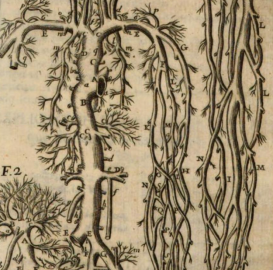In the intellectual context of post-Cartesian Europe, there were ongoing attempts to find a feasible solution to the problem of the connection between the body and the soul. Although the rational soul had been located in the brain since Greco-Latin antiquity, the rise of descriptive anatomy and new observation techniques brought about by the microscope favored much more precise knowledge of that organ and made its ramifications—the nerves—the intermediary between the mind and the senses. Different models for understanding the nervous system competed to resolve the problems raised by Cartesian dualism. Some of these regarded the nerves as taut strings that transmitted information thanks to vibrations like those of musical instruments; others appealed to the chemical and corpuscular composition of animal spirits.
In this “nervous revolution” of the second half of the seventeenth century, Iberian authors were absent from the predominant narratives—but they were not oblivious to the process of reflection and redefinition of the body-soul relationship. Echoing the main theories circulating in Europe, many Hispanic physicians and scientists also proposed alternative versions in manuals of anatomy and natural philosophy. Since the structure of the nerves could not be observed under a microscope, multiple forms of representation (engravings, prints, literary metaphors) were crucial to making understandable realities that could not be empirically demonstrated. This project examines the interaction between medicine, art, and religion in the diffusion and establishment of the main proposals of early modern nervous physiology.

